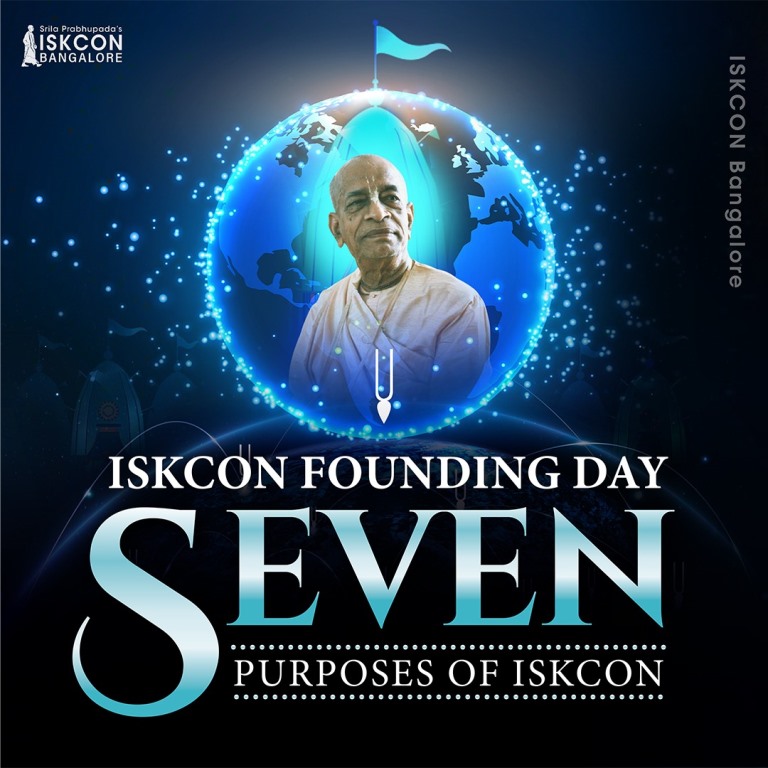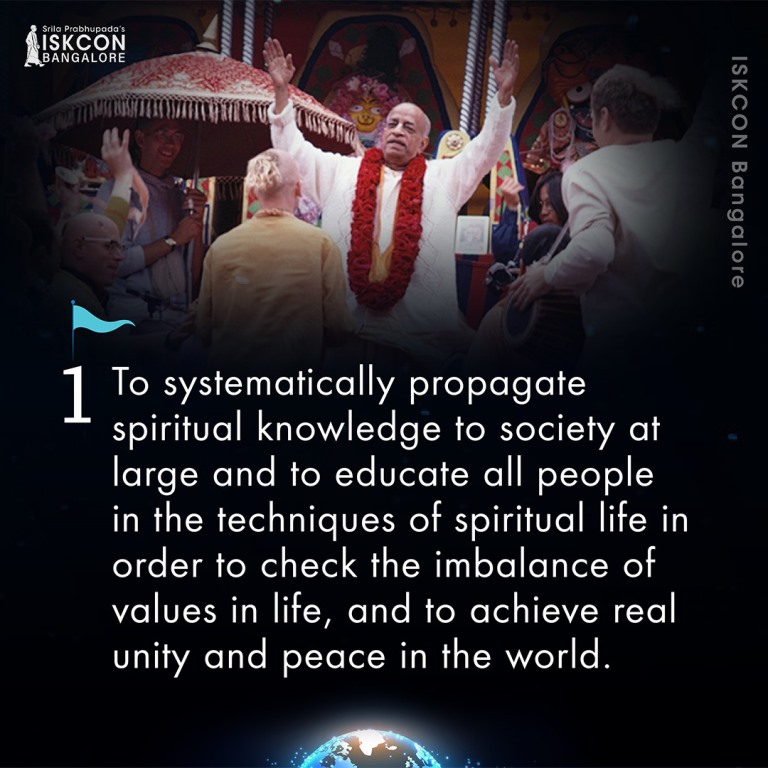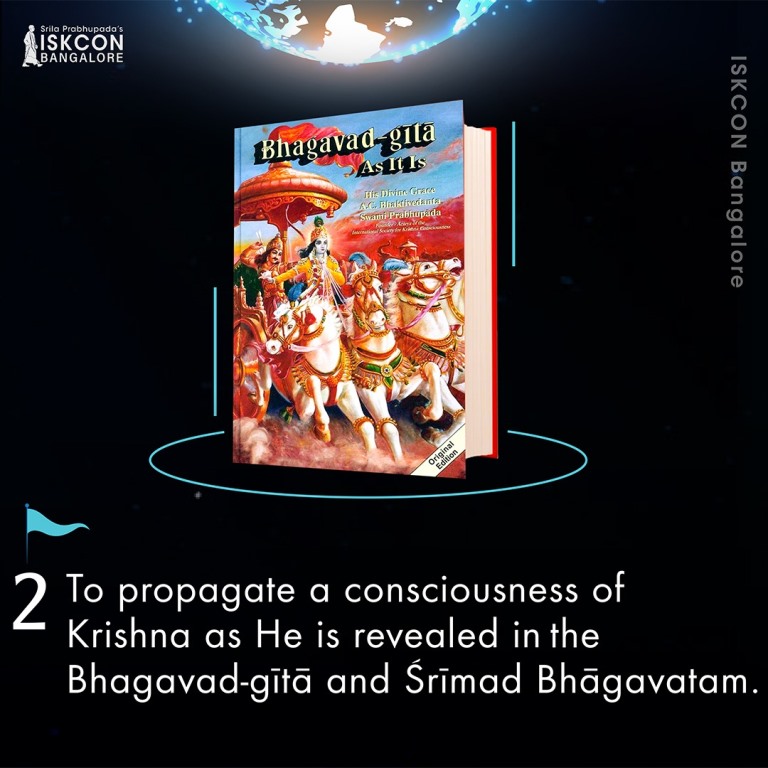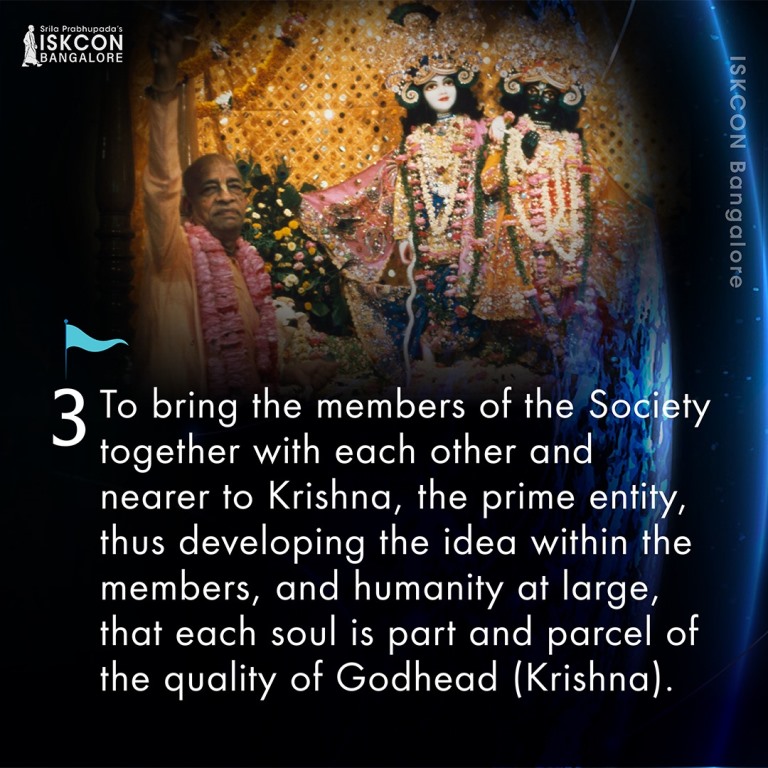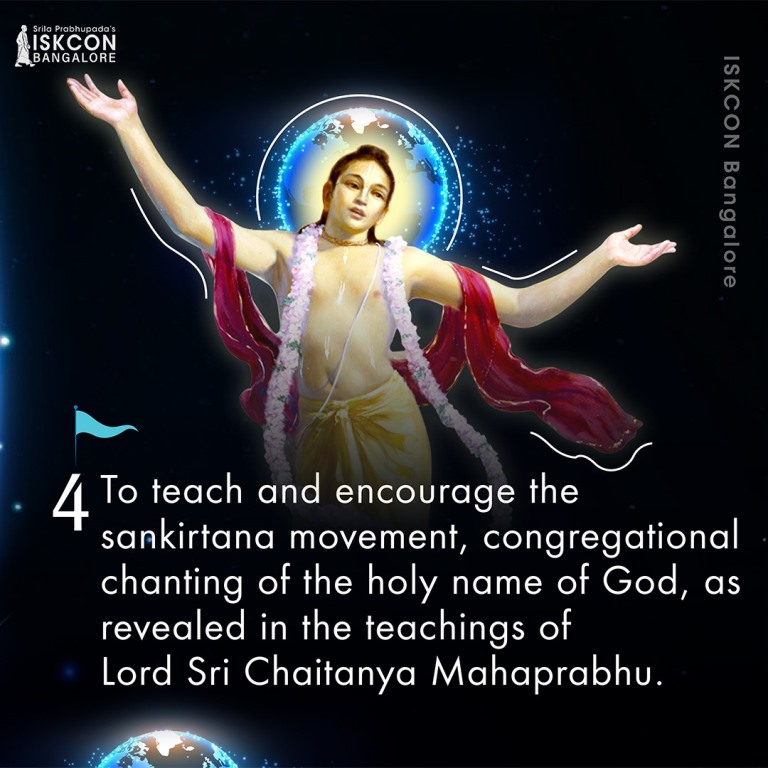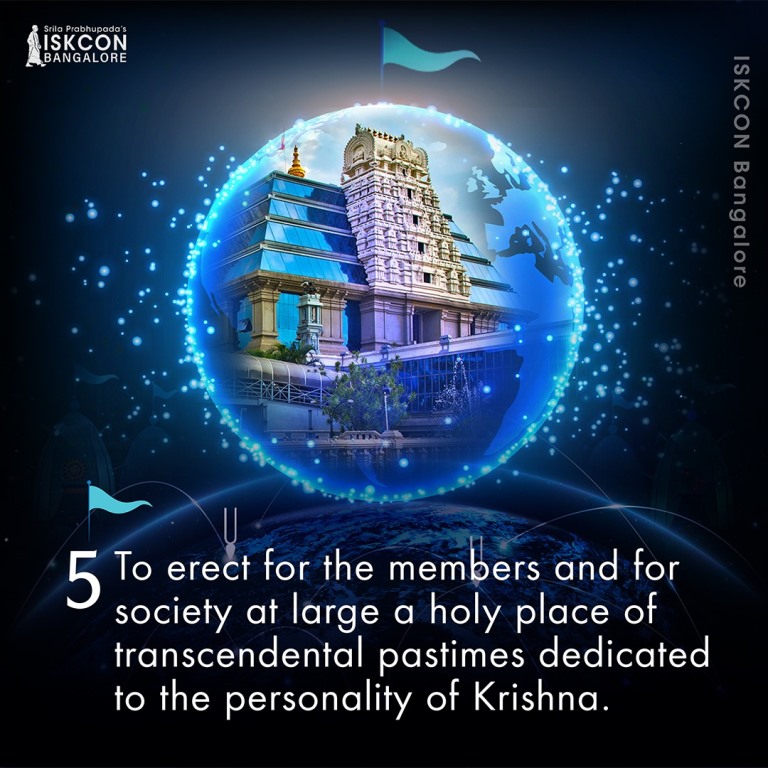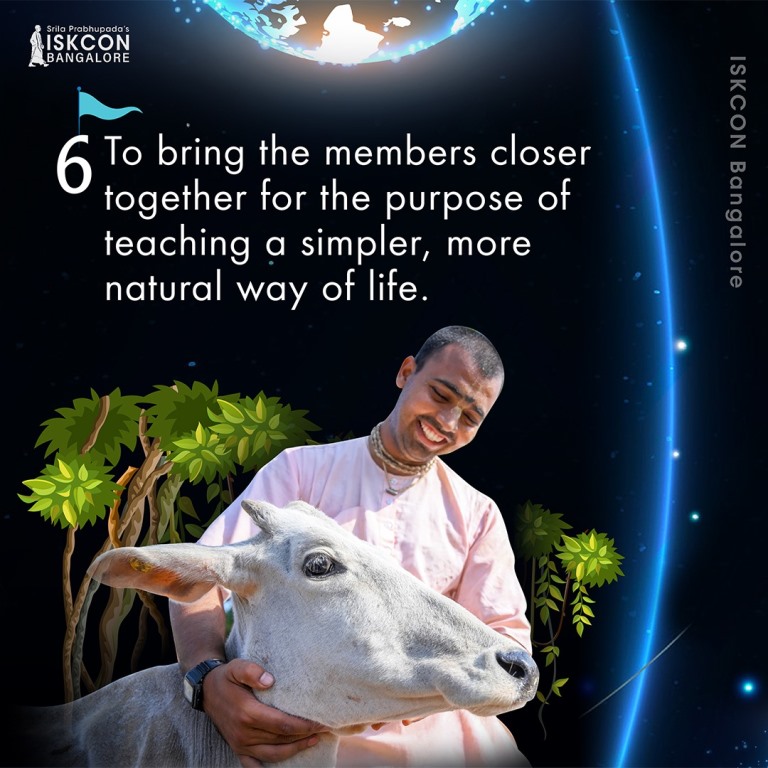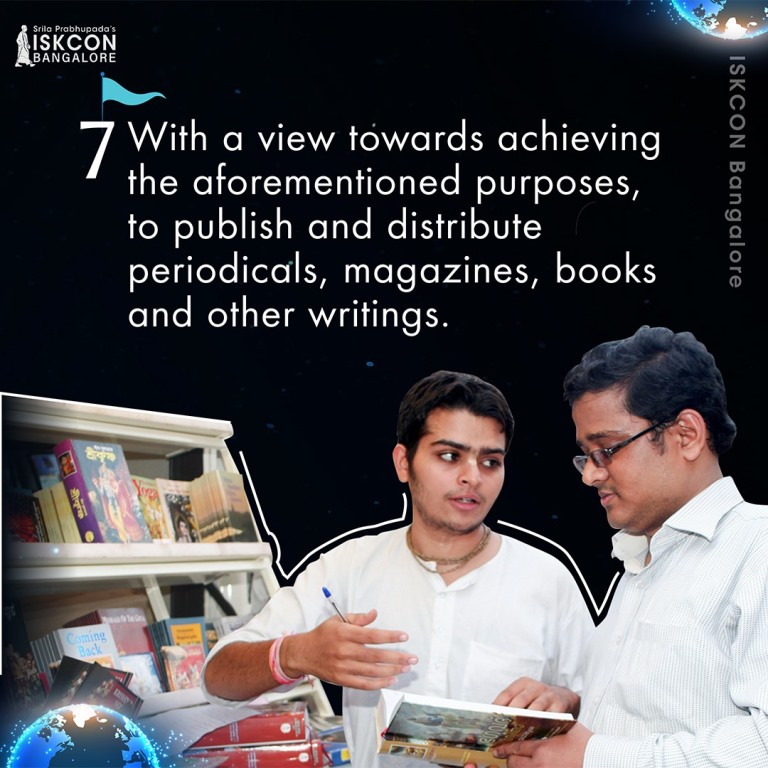History of ISKCON
History of Hare Krishna Movement – ISKCON stands for International Society for Krishna Consciousness. Srila Prabhupada who went to the United States of America in the year 1966 to spread the message of Krishna and engage people in the practice of the yuga-dharma (chanting of the holy names of Krishna) established this society in 1966.
All that he carried with him was a trunk full of copies of Srimad Bhagavatam written by him, an umbrella and forty rupees (which was the equivalent of $7 at that time). He operated from a store front in New York on 26, II Avenue and regularly gave classes on verses from Bhagavad-gita. With the help of some of his initial followers, Srila Prabhupada incorporated this society with the vision of developing it into a world-wide organization.
Seven purposes of ISKCON
- To systematically propagate spiritual knowledge to society at large and to educate all people in the techniques of spiritual life in order to check the imbalance of values in life and to achieve real unity and peace in the world.
- To propagate a consciousness of Krishna, as He revealed in the Bhagavad-gita and Srimad-Bhagavatam.
- To bring the members of the Society together with each other and nearer to Krishna, the prime entity, thus developing the idea within the members, and humanity at large, that each soul is part and parcel of the quality of Godhead (Krishna).
- To teach and encourage the sankirtana movement, congregational chanting of the holy name of God, as revealed in the teachings of Lord Sri Caitanya Mahaprabhu.
- To erect for the members and for society at large a holy place of transcendental pastimes dedicated to the personality of Krishna.
- To bring the members closer together for the purpose of teaching a simpler, more natural way of life.
- With a view towards achieving the aforementioned purposes, to publish and distribute periodicals, magazines, books and other writings.
History of worldwide Hare Krishna movement
Srila Prabhupada arrived in New York during America’s war in Vietnam (1961-1975). The people of the country, especially the youth were disillusioned. There was a prominent counterculture that dominated throughout the 1960s. The youth wanted to break-away from the status-quo, and were looking for a different school of thought.
At that time, Srila Prabhupada used to conduct kirtans at Tompkins Square Park. Many youngsters joined the kīrtana and started dancing. Some of them who were sincere started visiting him at his storefront temple and attended his classes. Srila Prabhupada distributed sumptuous Krishna prasadam at the end of each class. In this way he brought sincere and potential devotees into ISKCON.
In 1967, on the occasion of Janmashtami, the appearance day of Lord Krishna, Srila Prabhupada gave initiation to some of the sincere followers and accepted them as his disciples. He accepted them not on the basis of the rigid Hindu caste system, but on the basis of qualification and sincerity of their spiritual practice. This was the first and bold attempt by Srila Prabhupada to metamorphosise Westerners into full-time devotees through the process of initiation.
Srila Prabhupada clearly stated that the Hare Krishna movement is not an arm-chair philosophy or a hobby. It is a way of life that can end man’s suffering of social, political and economic problems. Even at the age of 70, he did not rest. He travelled around the world 14 times in 12 years spreading the message of Krishna Consciousness, and convinced many people to the idea of God-centered society.
He also inspired his disciples to form self-sufficient farm communities based on the principle of ‘Plain living and high thinking’. The first such farm community was started in the year 1968 in West Virginia, and it was called New Vrindavan.
Growth of ISKCON
The eternal religion (sanatana dharma) was new to the western world and to help the westerners learn, and get an exposure to the Vedic scriptures such as Bhagavad-gita and Srimad Bhagavatam and to educate them on the practices of spiritual life from childhood, Srila Prabhupada established a Gurukul in 1972 in Dallas, Texas.
Srila Prabhupada progressively trained his disciples in the time honored tradition of Deity-worship to help them advance spiritually. To quote Srila Prabhupada:
Krishna cannot be understood with one’s present senses. But, by His kindness He agrees to personally appear as a Deity to accept our service. When we are attracted to the beautiful form of the Deity, we will forget our attraction for material things, and as we serve the Deity we will develop pure love of God. Then our lives will be successful.
Srila Prabhupada instructed that nobody should go hungry within a 10 mile radius of an ISKCON temple. In the year 1972, devotees started the ISKCON food relief program and distributed prasadam (food offered to Lord Krishna). His aim was to expand Krishna Consciousness through philosophy, service and spiritual food (prasadam).
Srila Prabhupada’s Books
Srila Prabhupada’s most compelling and momentous contributions are his books. He established the Bhaktivedanta Book Trust in 1972, and these books form the basis of the Hare Krishna movement. They have been translated into several languages.
Srila Prabhupada also introduced the worship of the Tulasi plant. It is mentioned in the Vedic scriptures that whoever worships Tulasi Devi will be freed from all sins and goes back to Godhead. If you cultivate and care for the Tulasi plant it gives pleasure to Lord Krishna and you gain mercy of Tulasi Devi in devotional service and pure love of Lord Krishna.
As a child Srila Prabhupada celebrated Ratha Yatra in Calcutta with his friends and neighbors. He still continued the Ratha Yatra festivities, but now on the streets of New York and other big cities around the world. Lord Chaitanya Mahaprabhu, 500 years ago anticipated that one day the Hare Krishna Maha-mantra will be heard in every town and village of the world. In the mid-70s the Hare Krishna movement became a house-hold name. With more than a 100 temples, restaurants, schools, institutions and farm communities, ISKCON grew beyond Srila Prabhupada’s expectations.

